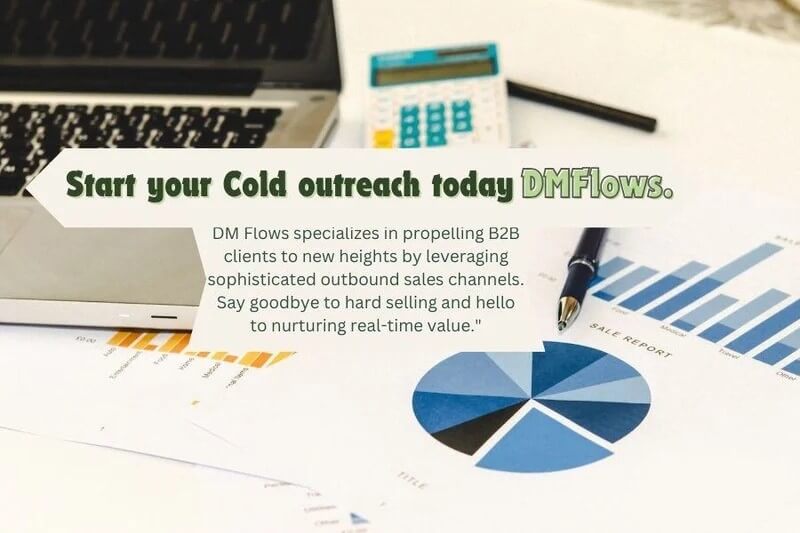- Outbound Sales Metrics
Outbound Sales Metrics
In the fast-paced world of sales, outbound efforts remain a cornerstone for driving new business and fostering growth. But with so much time and energy invested in outreach, how can you truly measure the effectiveness of your outbound sales strategies? The answer lies in outbound sales metrics.
These quantifiable measures provide valuable insights into your team’s performance, helping you identify strengths, weaknesses, and areas for improvement. By tracking the right metrics, you can optimize your outbound approach, maximize conversions, and ultimately, boost your bottom line.
This article dives deep into the most crucial outbound sales metrics, exploring their significance and offering actionable tips for leveraging them to enhance your sales success.
Introduction to Outbound Sales Metrics
Outbound sales metrics are like the GPS for your sales team – they help you navigate the twists and turns of the sales process. Think of them as your trusty dashboard that shows you how well your outbound sales strategies are performing.
Why Outbound Sales Metrics Matter
outbound sales metrics allow companies to measure the return on investment of their sales campaigns and tactics, helping them optimize their efforts for maximum impact. Outbound sales metrics are more than just numbers on a spreadsheet. They offer a powerful lens for:
Tracking Performance Over Time
Metrics allow you to chart your progress and identify trends. Are conversion rates rising or falling? Is your team exceeding or falling short of targets? By monitoring these trends, you can make informed decisions about resource allocation and adjust strategies as needed.
Enhancing Sales Strategies
Data empowers you to see what’s working and what’s not. Did a recent email campaign generate a surge in leads? Did a change in call scripts lead to a higher hit rate? By analyzing results, you can refine your outbound tactics and personalize approaches for better outcomes.
Improving Team Productivity
Metrics help you identify areas where reps might be struggling. Is there a low contact rate? Are calls getting stuck at a specific stage of the sales funnel? Understanding these roadblocks allows you to provide targeted coaching and improve overall team efficiency.
Optimizing Sales Processes
Data reveals opportunities to streamline your outbound sales process. Are there unnecessary steps that slow reps down? Can technology automate certain tasks? By analyzing metrics, you can identify inefficiencies and implement changes to create a smoother, more effective process.

Top Outbound Sales Metrics for Peak Performance
Now that we understand the importance of outbound sales metrics, let’s explore some of the most crucial ones to track:
Conversion Rate
This metric, often considered the holy grail of outbound sales, measures the percentage of outbound interactions (calls, emails, etc.) that convert into a desired outcome, such as a closed deal, a scheduled meeting, or a qualified lead. A high conversion rate signifies a successful outbound strategy.
Average Deal Size
This metric reveals the average value of the deals your outbound team closes. Tracking it helps you understand the overall revenue generated from your outbound efforts and identify opportunities to increase the value of each sale.
Sales Cycle Length
This metric measures the average time it takes to convert a lead into a paying customer through your outbound efforts. Analyzing trends in sales cycle length can help you identify bottlenecks and streamline your sales process for faster conversions.
Contact Rate
This metric measures the percentage of your outbound calls or emails that connect with a live person or receive a response. A high contact rate increases your chances of engaging with potential customers and driving conversions.
Hit Rate
This customizable metric allows you to track the percentage of specific activities that lead to a desired outcome. It can be applied to calls, emails, meetings, or any other outbound interaction. Analyzing hit rates helps you identify the most effective ways to engage with leads.
New Business Revenue
This top-level metric reflects the total revenue generated by your outbound sales team. Tracking it alongside other outbound metrics provides a holistic view of the team’s contribution to the company’s bottom line.
Outbound Sales Growth
This metric measures the increase in new business revenue generated by your outbound team over time. It’s a crucial indicator of the overall effectiveness of your outbound sales efforts in driving growth.
Cost per Acquisition (CPA)
This metric reveals the average cost associated with acquiring a new customer through your outbound efforts. Tracking CPA helps you determine the profitability of your outbound campaigns and optimize them for better returns.
Customer Lifetime Value (CLV)
While not strictly an outbound sales metric, CLV provides valuable insights for outbound strategy. By understanding the total revenue a customer generates over their relationship with your company, you can tailor outbound efforts to acquire high-value customers who contribute significantly to your bottom line.
Best Practices for Quick Lead Response in Outbound Sales

Best practices for quick lead response are like having a well-oiled machine – it keeps your sales engine running smoothly and efficiently. From setting up automated responses to empowering your team to prioritize lead follow-ups, there are many strategies to ensure you’re always one step ahead of the competition.
Tracking Sales Pipeline Effectiveness
Overview of Sales Pipeline Management
When it comes to outbound sales, keeping a close eye on your sales pipeline is crucial. Think of it as your roadmap to success, showing you where your leads are in the sales process and highlighting areas that need attention.
Measuring and Optimizing Sales Pipeline Efficiency
To ensure your sales pipeline is running smoothly, you’ll want to measure key metrics like conversion rates, average deal size, and sales cycle length. By tracking and optimizing these metrics, you can identify bottlenecks, streamline processes, and ultimately boost your sales efficiency.
Tracking Sales Pipeline Effectiveness

Criteria for Assessing Lead Quality
Not all leads are created equal. Evaluating lead quality involves looking at factors like lead source, engagement level, and fit with your target market. Quality leads are more likely to convert into paying customers and drive revenue for your business.
Strategies for Generating High-Quality Leads in Outbound Sales
To attract high-quality leads, focus on targeted outreach, personalized messaging, and nurturing relationships with prospects. By honing in on the right leads and providing value at every touchpoint, you can improve your outbound sales success.
Utilizing Technology for Enhanced Sales Metrics

Role of Technology in Outbound Sales Performance Tracking
Technology plays a key role in modern outbound sales by enabling real-time tracking of sales metrics, automating repetitive tasks, and providing valuable insights into customer behavior. Leveraging the right technology can give your sales team a competitive edge.
Tools and Platforms for Advanced Sales Metric Analysis
From CRM systems to analytics tools, there’s a vast array of technology available to help analyze and optimize your sales performance. By utilizing these tools effectively, you can gain deeper insights into your sales process and make data-driven decisions to improve outcomes.
Conclusion
In conclusion, mastering outbound sales metrics is essential for sales teams to thrive in today’s competitive business landscape. By diligently monitoring and optimizing key metrics, businesses can refine their sales strategies, increase conversion rates, and drive revenue growth. With a strategic focus on performance indicators, lead quality evaluation, and leveraging technology, organizations can set themselves up for success in outbound sales. By continuously refining their approach and embracing data-driven insights, sales teams can stay ahead of the curve and achieve sustainable sales success.


